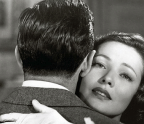Behind These Prison Walls

Zarinah Shabazz: You were both introduced to photography by members of your family at an early age. As young men, you both became corrections officers. How did you each decide to work in corrections?
Lorenzo Steele, Jr.: I grew up in Queens. My father was a disciplinarian, and my mother was a disciplinarian. We were the generation that your father and mother were like, “Listen, take those city tests, those civil service tests.” I took the test. One day, my mother said, “You’ve got mail.” I opened it up, and it was from the Department of Correction. I had passed the test. This was 1987, and I was twenty-two years old.
Jamel Shabazz: I had just come home from the army in the summer of 1980. At that time, I had aspirations to go to college, but my father stressed to me the importance of taking a city job, because of the good benefits that it afforded. I applied for a varietyof jobs—Transit, Post Office, and Correction. In 1982, both Correction and Post Office called me at the same time. I realized that I had to make a choice, and felt that Correction was the best place for me to be, because a lot of young brothers were being locked up and I had a desire to make a difference.
Prior to working in Correction, I worked at the Wards Island men’s shelter as a security officer. Wards Island is almost like a prison, and a lot of men of color were housed there. Oftentimes you would have men who were going through
You’re reading a preview, subscribe to read more.
Start your free 30 days





